Are you tired of struggling with burnt pans that seem impossible to clean? Fear not, for I have the perfect solution to rescue your cookware and restore it to its former glory!
Cleaning a burnt pan may seem daunting, but with the right techniques and a little patience, you can say goodbye to stubborn stains and hello to sparkling cleanliness.
Dive into the world of pan rejuvenation with me, and discover the secrets to effortlessly cleaning even the toughest burnt messes.

How To Clean Burnt Pan
Cleaning a burnt pan can be a daunting task, but with the right techniques and products, you can restore your cookware to its former glory. Here are 23 ways to clean a burnt pan effectively:
1. Scrape And Soak
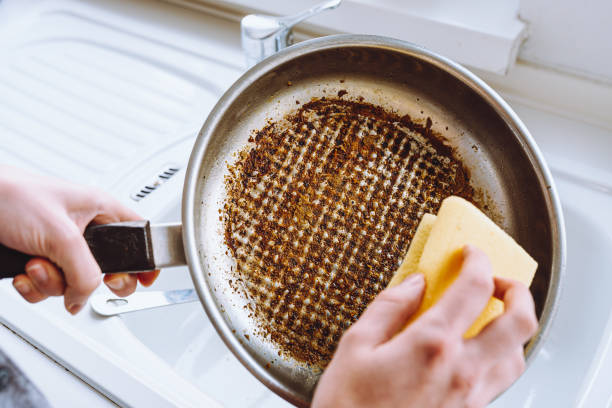
Scraping and soaking are essential steps in cleaning a burnt pan effectively. Begin by scraping off any loose burnt food particles using a spatula or a wooden spoon.
This initial scraping helps to remove the surface debris, making the cleaning process more manageable. After scraping, soak the pan in hot, soapy water for a few hours or overnight. The soaking helps to loosen stubborn burnt-on residue, making it easier to scrub away later.
For added effectiveness, you can also add baking soda or vinegar to the soaking water, as they can help break down the burnt stains.
Once soaked, scrub the pan with a non-abrasive sponge or brush to remove the remaining burnt residue. Rinse thoroughly with clean water, and your pan should be clean and ready to use again.
2. Hot Water
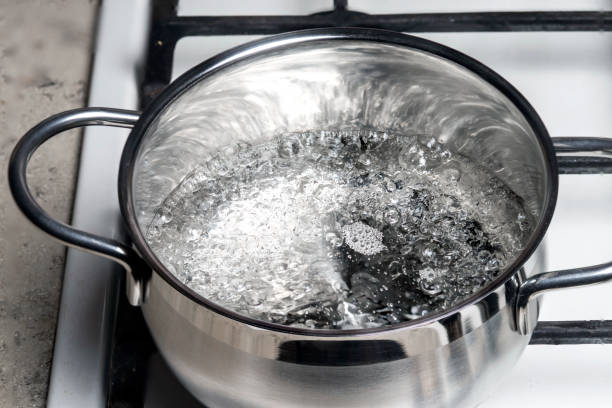
Using hot water is a simple yet effective method for cleaning a burnt pan. Start by filling the burnt pan with hot water, ensuring that it covers the burnt areas completely. Let the hot water soak into the burnt residue for at least 30 minutes or longer if the burn is severe.
The heat from the water helps to loosen the burnt-on food, making it easier to remove. After soaking, use a non-abrasive sponge or brush to scrub the pan gently. The combination of hot water and scrubbing should lift off most of the burnt residue.
Rinse the pan thoroughly with clean water to remove any remaining debris. This method is particularly useful for pans with light to moderate burns and is a quick and environmentally friendly way to restore your cookware.
3. White Vinegar
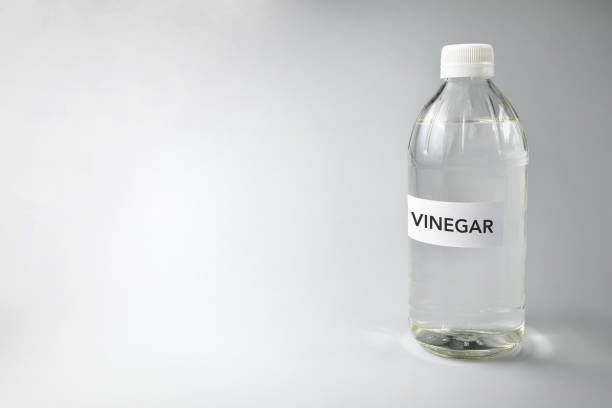
White vinegar is a versatile and natural cleaning agent that can effectively tackle burnt-on residue in pans. To clean a burnt pan using white vinegar, start by pouring a generous amount of vinegar into the pan, covering the burnt areas completely.
Let the vinegar soak for several hours or overnight, allowing its acidic properties to break down the burnt food particles. The acidity of the vinegar helps to loosen the burnt residue, making it easier to scrub off.
After soaking, scrub the pan with a non-abrasive sponge or brush to remove the loosened burnt-on food. Rinse the pan thoroughly with water to remove any vinegar residue.
White vinegar is gentle yet powerful, making it suitable for a wide range of cookware and an eco-friendly option for cleaning burnt pans.
4. Water, Vinegar, And Baking Soda
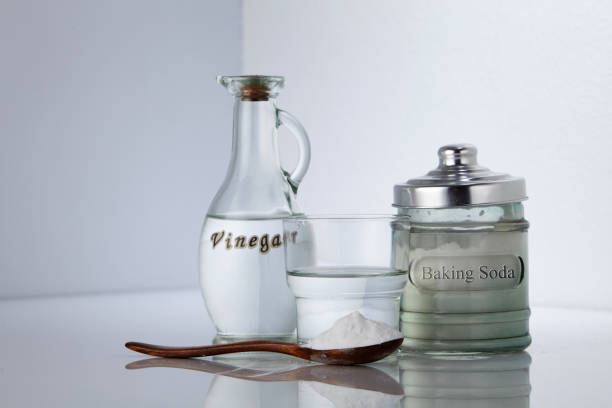
A mixture of water, vinegar, and baking soda is a potent combination for cleaning burnt pans. Begin by filling the burnt pan with a mixture of equal parts water and white vinegar, ensuring that it covers the burnt areas completely.
Let the pan soak in this solution for a few hours or overnight. The acidity of the vinegar helps to break down the burnt-on residue, making it easier to remove. After soaking, sprinkle a generous amount of baking soda over the burnt areas.
The baking soda acts as a gentle abrasive that helps to lift off stubborn burnt food particles. Use a non-abrasive sponge or brush to scrub the pan, focusing on the areas with burnt residue.
The combination of vinegar and baking soda creates a fizzing action that aids in loosening the burnt-on food. Rinse the pan thoroughly with clean water to remove the vinegar and baking soda residue.
This method is effective for pans with moderate to severe burns and leaves your cookware clean and refreshed.
5. Baking Soda
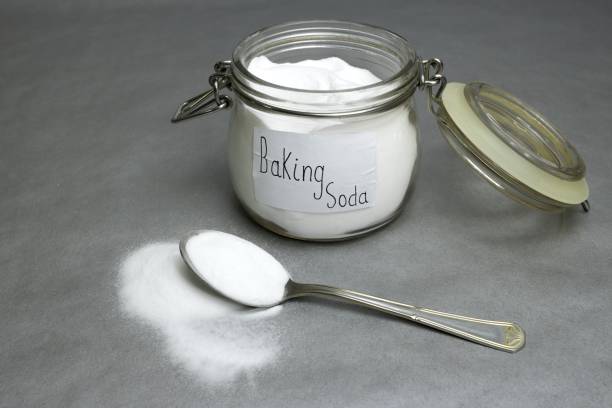
Baking soda is a versatile and gentle cleaning agent that can work wonders on burnt pans. To clean a burnt pan using baking soda, start by sprinkling a generous amount of baking soda over the burnt areas.
Next, add enough hot water to create a paste-like consistency with the baking soda. Allow the baking soda paste to sit on the burnt residues for at least 30 minutes or longer for tougher stains.
The alkaline nature of baking soda helps to break down the burnt-on food particles without scratching the surface of the pan. After the paste has had time to work its magic, use a non-abrasive sponge or brush to scrub the pan, focusing on the areas with burnt residue.
The gentle abrasiveness of baking soda aids in lifting off the stubborn burnt food. Rinse the pan thoroughly with clean water to remove the baking soda and loosened residue.
Baking soda is safe to use on most types of cookware and is an eco-friendly option for cleaning burnt pans.
6. Vinegar And Baking Soda
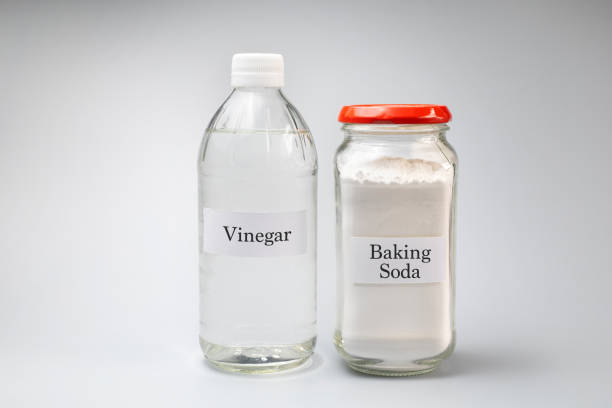
Combining vinegar and baking soda creates a powerful cleaning solution that can effectively tackle burnt-on residue in pans. To clean a burnt pan using vinegar and baking soda, start by sprinkling a layer of baking soda over the burnt areas.
Next, pour white vinegar over the baking soda, causing a fizzy reaction that helps to loosen the burnt food particles. Allow the mixture to sit for at least 30 minutes or longer for tougher stains.
The acidity of the vinegar and the abrasive action of baking soda work together to break down the burnt-on residue. After the mixture has had time to work, use a non-abrasive sponge or brush to scrub the pan, focusing on the areas with burnt residue.
The combination of vinegar and baking soda helps to lift off the stubborn burnt food. Rinse the pan thoroughly with clean water to remove the vinegar and baking soda residue.
This method is particularly effective for pans with moderate to severe burns and is a natural and eco-friendly way to restore your cookware.
7. Cream Of Tartar
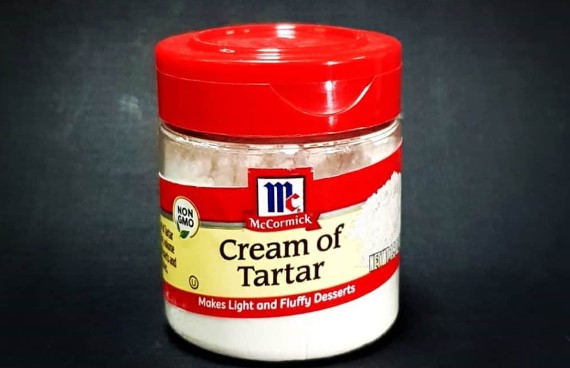
Cream of tartar, a byproduct of winemaking, can be a surprising but effective ingredient for cleaning burnt pans. To clean a burnt pan using cream of tartar, start by sprinkling a generous amount of cream of tartar directly onto the burnt areas.
Next, add a small amount of water to create a paste-like consistency with the cream of tartar. Let the paste sit on the burnt residues for at least 30 minutes or longer for tougher stains.
The acidic properties of cream of tartar help to break down the burnt-on food particles without damaging the pan’s surface. After the paste has had time to work, use a non-abrasive sponge or brush to scrub the pan, focusing on the areas with burnt residue.
The gentle abrasiveness of cream of tartar aids in lifting off the stubborn burnt food. Rinse the pan thoroughly with clean water to remove the cream of tartar and loosened residue.
Cream of tartar is safe to use on most types of cookware and provides a natural and eco-friendly option for cleaning burnt pans.
8. Cream Of Tartar And Vinegar
Combining cream of tartar with vinegar creates a potent cleaning solution that is highly effective for removing burnt residues from pans. To clean a burnt pan using cream of tartar and vinegar, start by sprinkling a layer of cream of tartar directly onto the burnt areas.
Next, pour white vinegar over the cream of tartar, creating a foaming reaction that helps to loosen the burnt-on food particles. Allow the mixture to sit on the burnt residues for at least 30 minutes or longer for tougher stains.
The acidity of the vinegar and the abrasive action of cream of tartar work together to break down the burnt-on residue. After the mixture has had time to work, use a non-abrasive sponge or brush to scrub the pan, focusing on the areas with burnt residue.
The combination of cream of tartar and vinegar helps to lift off the stubborn burnt food. Rinse the pan thoroughly with clean water to remove the cream of tartar and vinegar residue.
This method is particularly effective for pans with moderate to severe burns and provides a natural and eco-friendly way to restore your cookware.
9. Wine
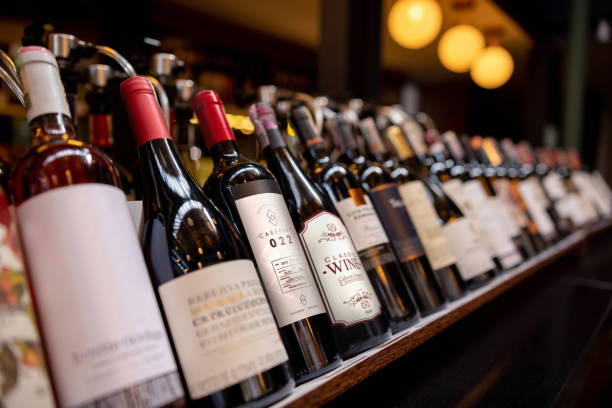
Using wine to clean a burnt pan might seem unconventional, but it can be surprisingly effective, especially for certain types of burns. To clean a burnt pan with wine, start by pouring a small amount of wine into the pan, just enough to cover the burnt areas.
Red wine, in particular, contains acids and tannins that can help loosen burnt-on food particles. Heat the pan with the wine on the stove until it simmers, then let it cool slightly before scrubbing.
The heat combined with the wine’s properties helps to break down the burnt residues. Use a non-abrasive sponge or brush to scrub the pan, focusing on the areas with burnt residue.
Rinse the pan thoroughly with clean water to remove any remaining wine and loosened residue. This method is best suited for pans with lighter burns and provides a unique and aromatic way to clean your cookware.
10. Ketchup, Tomato Sauce, Or Crushed Tomatoes
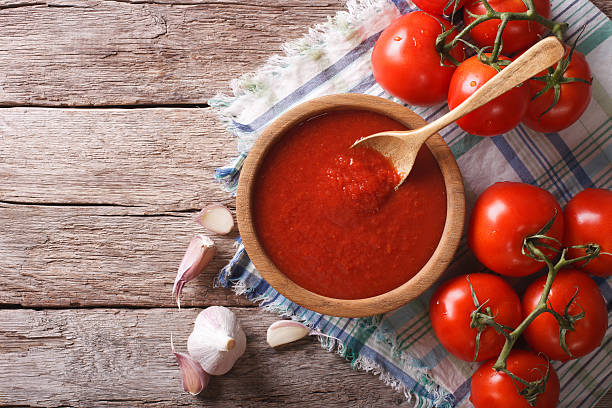
Ketchup, tomato sauce, or crushed tomatoes might seem like ingredients reserved for recipes, but they can also be effective in cleaning burnt pans.
To clean a burnt pan using ketchup, tomato sauce, or crushed tomatoes, start by spreading a layer of the tomato-based product over the burnt areas. The acidity and enzymes in tomatoes help to break down burnt-on food particles.
Let the tomato-based product sit on the burnt residues for at least 30 minutes or longer for tougher stains. After the product has had time to work, use a non-abrasive sponge or brush to scrub the pan, focusing on the areas with burnt residue.
The natural acidity of tomatoes aids in lifting off the stubborn burnt food. Rinse the pan thoroughly with clean water to remove the tomato-based product and loosened residue.
This method is suitable for pans with light to moderate burns and provides a natural and food-safe way to clean your cookware.
11. Salt
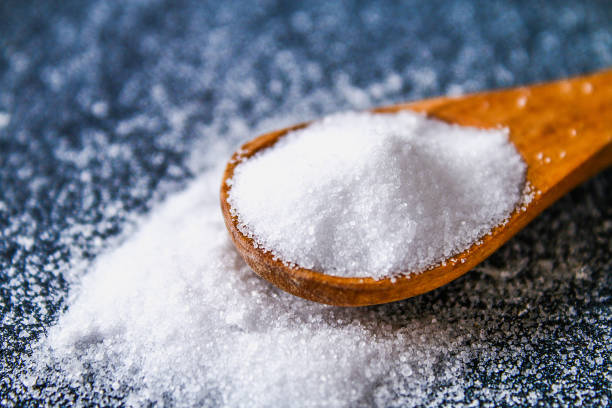
Salt is a versatile and abrasive natural cleaner that can be used to tackle burnt residues in pans. To clean a burnt pan using salt, start by sprinkling a generous amount of coarse salt directly onto the burnt areas.
The abrasiveness of the salt helps to scrub away the burnt-on food particles without damaging the pan’s surface. Next, add a small amount of water to create a paste-like consistency with the salt.
Let the salt paste sit on the burnt residues for at least 30 minutes or longer for tougher stains. After the paste has had time to work, use a non-abrasive sponge or brush to scrub the pan, focusing on the areas with burnt residue.
The abrasive action of the salt paste aids in lifting off the stubborn burnt food. Rinse the pan thoroughly with clean water to remove the salt paste and loosened residue.
This method is effective for pans with light to moderate burns and provides a natural and eco-friendly way to clean your cookware.
12. Lemon And Salt

Using a combination of lemon and salt is a natural and effective method for cleaning burnt pans. Start by cutting a lemon in half and sprinkling a generous amount of salt over the burnt areas of the pan.
The acidity of the lemon and the abrasiveness of the salt work together to break down burnt-on food particles. Rub the lemon halves over the salted areas, squeezing the juice as you scrub.
Let the lemon and salt mixture sit on the burnt residues for at least 30 minutes or longer for tougher stains. After the mixture has had time to work, use the lemon halves or a non-abrasive sponge to scrub the pan, focusing on the areas with burnt residue.
The combination of lemon and salt helps to lift off the stubborn burnt food. Rinse the pan thoroughly with clean water to remove the lemon and salt residue.
This method is particularly effective for pans with light to moderate burns and provides a natural, fresh scent while cleaning your cookware.
13. Limes And Salt
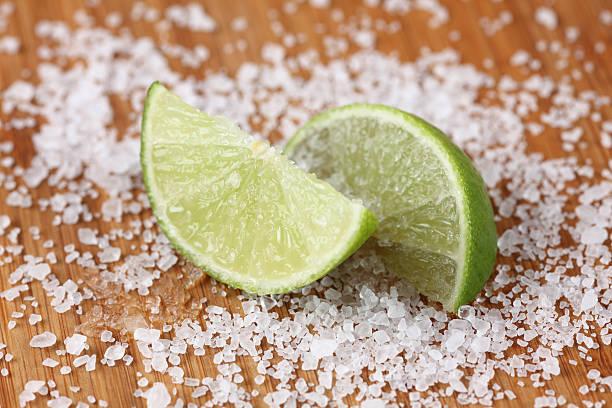
Using limes and salt is another natural and effective method for cleaning burnt pans, similar to using lemons and salt. Begin by cutting a lime in half and sprinkling a generous amount of salt over the burnt areas of the pan.
The acidity of the lime and the abrasiveness of the salt work together to break down burnt-on food particles. Rub the lime halves over the salted areas, squeezing the juice as you scrub.
Let the lime and salt mixture sit on the burnt residues for at least 30 minutes or longer for tougher stains. After the mixture has had time to work, use the lime halves or a non-abrasive sponge to scrub the pan, focusing on the areas with burnt residue.
The combination of lime and salt helps to lift off the stubborn burnt food. Rinse the pan thoroughly with clean water to remove the lime and salt residue.
This method is effective for pans with light to moderate burns and provides a natural, citrusy scent while cleaning your cookware.
14. Raw Potato And Salt
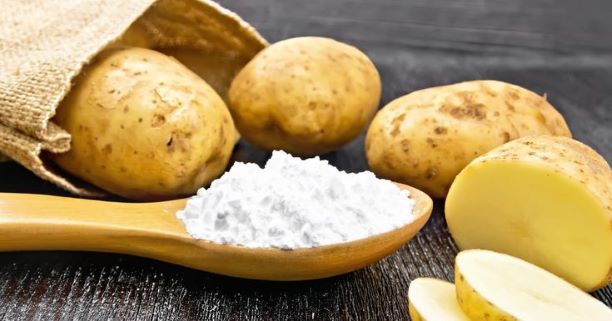
Using raw potato and salt is a unique yet effective method for cleaning burnt pans, especially for nonstick surfaces. To clean a burnt pan using raw potato and salt, start by cutting a raw potato in half and sprinkling a generous amount of salt over the burnt areas of the pan.
The starch in the potato and the abrasiveness of the salt work together to break down burnt-on food particles without scratching the pan’s surface. Rub the potato halves over the salted areas, applying gentle pressure as you scrub.
Let the potato and salt mixture sit on the burnt residues for at least 30 minutes or longer for tougher stains. After the mixture has had time to work, use the potato halves or a non-abrasive sponge to scrub the pan, focusing on the areas with burnt residue.
The combination of raw potato and salt helps to lift off the stubborn burnt food. Rinse the pan thoroughly with clean water to remove the potato and salt residue.
This method is gentle on nonstick pans and provides a natural way to clean your cookware while also utilizing leftover food items.
15. Boiled Lemons
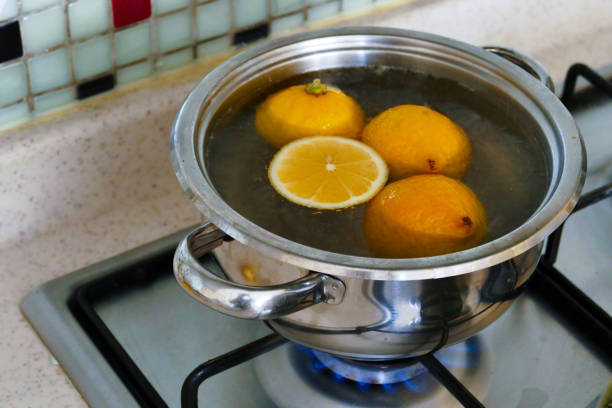
Boiled lemons are a natural and effective way to clean burnt pans and remove stubborn residues. To clean a burnt pan using boiled lemons, start by cutting a few lemons into slices or halves. Place the lemon slices or halves in a pot of water and bring it to a boil.
Let the lemons boil for several minutes to release their natural acids and oils. After boiling, remove the pot from heat and allow the water to cool slightly. Pour the boiled lemon water into the burnt pan, ensuring that it covers the burnt areas completely.
Let the pan soak in the lemon water for at least 30 minutes or longer for tougher stains. The acidity of the boiled lemons helps to break down burnt-on food particles. After soaking, use a non-abrasive sponge or brush to scrub the pan, focusing on the areas with burnt residue.
Rinse the pan thoroughly with clean water to remove the lemon residue and loosened burnt food. This method is gentle yet effective and leaves your cookware smelling fresh and citrusy.
16. Coca Cola
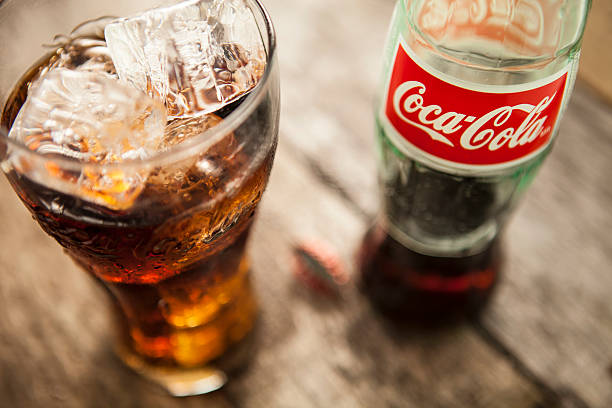
Using Coca-Cola to clean a burnt pan might sound surprising, but its acidic properties can help break down burnt-on residues. To clean a burnt pan with Coca-Cola, pour enough Coke into the pan to cover the burnt areas completely.
Let the Coke soak in the pan for several hours or overnight. The phosphoric acid in Coca-Cola helps to loosen the burnt food particles. After soaking, scrub the pan with a non-abrasive sponge or brush to remove the loosened burnt residue.
Rinse the pan thoroughly with clean water to remove any remaining Coke and loosened debris. This method can be effective for pans with light to moderate burns but may require additional scrubbing for tougher stains.
It’s important to note that Coca-Cola is a sugary beverage, so ensure you rinse the pan well to avoid any sticky residue.
17. Dryer Sheets
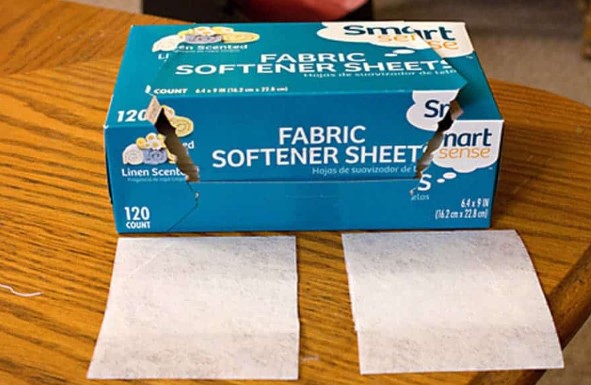
Using dryer sheets to clean a burnt pan might seem unconventional, but their anti-static properties can help loosen burnt-on residues. To clean a burnt pan with dryer sheets, start by filling the pan with hot water.
Place a few dryer sheets on top of the water, ensuring they cover the burnt areas. Let the pan soak for several hours or overnight. The anti-static agents in the dryer sheets can help soften and loosen the burnt food particles.
After soaking, use a non-abrasive sponge or brush to scrub the pan, focusing on the areas with burnt residue. Rinse the pan thoroughly with clean water to remove any loosened debris.
This method can be effective for pans with light burns and provides a unique way to utilize household items for cleaning purposes. However, it may not be as effective for tough, stubborn stains.
18. Aluminum Foil
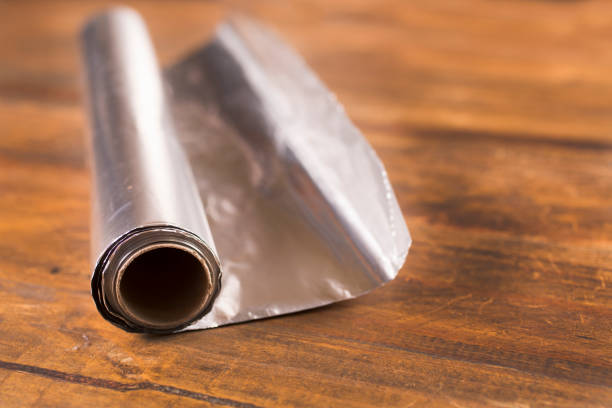
Aluminum foil can be used as an effective tool to clean a burnt pan, especially for removing tough, stubborn residues. To clean a burnt pan using aluminum foil, start by crumpling a sheet of aluminum foil into a ball.
Wet the ball slightly with water to create a scrubbing surface. Next, use the aluminum foil ball to scrub the burnt areas of the pan, applying gentle pressure as needed.
The abrasiveness of the aluminum foil helps to lift off burnt-on food particles without scratching the pan’s surface. Continue scrubbing until the burnt residue starts to loosen and come off.
Rinse the pan thoroughly with clean water to remove any remaining debris. This method is particularly useful for pans with heavy burns and provides a simple and effective way to restore your cookware. However, exercise caution to avoid scratching non-stick or delicate surfaces.
19. Hydrogen Peroxide And Baking Soda
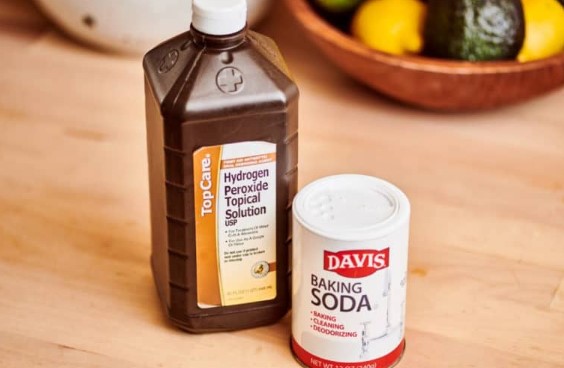
Combining hydrogen peroxide and baking soda creates a powerful cleaning solution that can effectively remove burnt residues from pans.
To clean a burnt pan using hydrogen peroxide and baking soda, start by sprinkling a layer of baking soda directly onto the burnt areas of the pan. Next, pour hydrogen peroxide over the baking soda, creating a foaming reaction that helps to loosen the burnt-on food particles.
Allow the mixture to sit on the burnt residues for at least 30 minutes or longer for tougher stains. The oxygenating action of hydrogen peroxide and the abrasive properties of baking soda work together to break down the burnt residue.
After the mixture has had time to work, use a non-abrasive sponge or brush to scrub the pan, focusing on the areas with burnt residue. Rinse the pan thoroughly with clean water to remove the hydrogen peroxide and baking soda residue.
This method is effective for pans with moderate to severe burns and provides a natural and eco-friendly way to clean your cookware.
20. Oxygen-Based Bleach
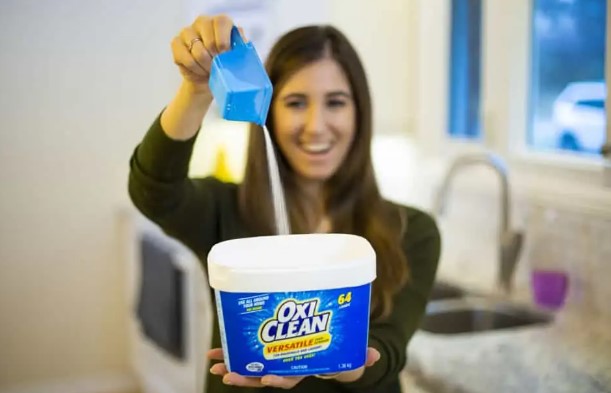
Oxygen-based bleach, such as sodium percarbonate or sodium perborate, can be an effective option for cleaning burnt pans. To clean a burnt pan using oxygen-based bleach, start by filling the pan with hot water.
Add a scoop of oxygen-based bleach powder to the water and stir to dissolve it. Let the pan soak in the bleach solution for several hours or overnight. The oxygenating action of the bleach helps to break down burnt-on food particles.
After soaking, use a non-abrasive sponge or brush to scrub the pan, focusing on the areas with burnt residue. Rinse the pan thoroughly with clean water to remove any bleach residue.
This method can be particularly effective for pans with heavy burns and provides a powerful way to restore your cookware. However, always follow the manufacturer’s instructions and safety guidelines when using oxygen-based bleach products.
21. Ammonia
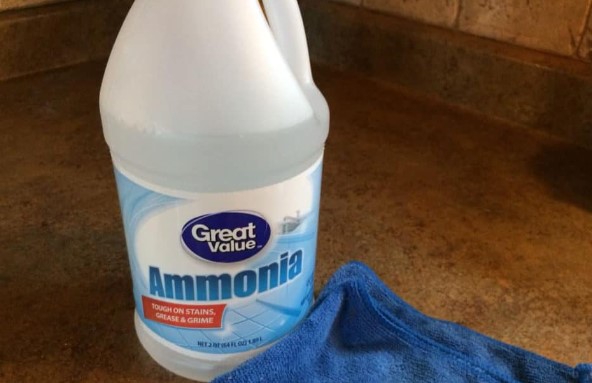
Using ammonia to clean a burnt pan should be done with caution due to its strong and potentially hazardous nature. If you choose to use ammonia, follow these safety precautions:
- Ventilation: Work in a well-ventilated area or outdoors to avoid inhaling ammonia fumes, which can be harmful.
- Protective Gear: Wear gloves, protective eyewear, and a mask to prevent contact with the skin, eyes, and respiratory system.
- Dilution: Dilute ammonia with water according to the manufacturer’s instructions. Avoid using concentrated ammonia directly on the pan.
- Soaking: Fill the burnt pan with the diluted ammonia solution and let it soak for several hours or overnight to loosen the burnt-on residues.
- Scrubbing: After soaking, use a non-abrasive sponge or brush to scrub the pan, focusing on the areas with burnt residue.
- Rinsing: Rinse the pan thoroughly with clean water to remove any ammonia residue before using it again for cooking.
It’s important to note that while ammonia can be effective for cleaning tough stains, it should be used with caution and kept out of reach of children and pets.
22. Dish Soap
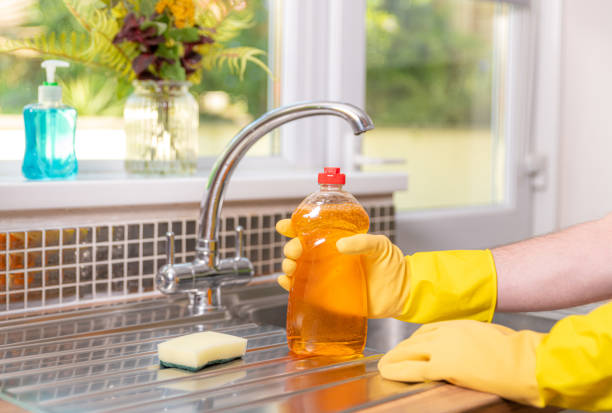
Dish soap is a simple yet effective solution for cleaning burnt pans. To clean a burnt pan with dish soap, start by filling the pan with hot water. Add a generous amount of dish soap to the water and let it soak for a few minutes to soften the burnt-on residues.
Use a non-abrasive sponge or brush to scrub the pan, focusing on the areas with burnt residue. The degreasing properties of dish soap help to lift off the burnt food particles without damaging the pan’s surface.
Rinse the pan thoroughly with clean water to remove the soap and loosened debris. This method is suitable for pans with light to moderate burns and provides a straightforward way to restore your cookware to its clean and usable state.
23. Dishwasher Tablets
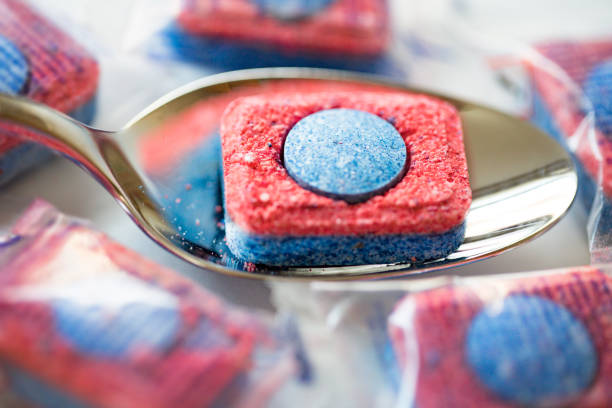
Dishwasher tablets can be surprisingly effective in cleaning burnt pans, especially for tough, stubborn residues. To clean a burnt pan using dishwasher tablets, start by filling the pan with hot water.
Drop one or two dishwasher tablets into the water, ensuring they dissolve completely. Let the pan soak for several hours or overnight. The powerful cleaning agents in dishwasher tablets help to break down burnt-on food particles.
After soaking, use a non-abrasive sponge or brush to scrub the pan, focusing on the areas with burnt residue. Rinse the pan thoroughly with clean water to remove any detergent residue.
This method can be particularly effective for pans with heavy burns and provides a convenient way to restore your cookware with minimal effort. However, be cautious with non-stick pans, as dishwasher tablets may be too abrasive for their surfaces.
Frequently Asked Questions (FAQs) – How To Clean Burnt Pan
Q: How can I remove burnt residue from my pan without damaging it?
A: You can safely clean burnt pans by using gentle abrasives like baking soda or a mixture of vinegar and water, along with a non-abrasive scrubber. These methods help lift burnt-on food without scratching the surface.
Q: What’s the best way to tackle burnt spots on stainless steel pans?
A: For stainless steel pans, a paste made from baking soda and water can work wonders. Apply it to the burnt areas, let it sit for a while, then scrub gently to reveal a clean and shiny surface.
Q: Can I use lemon to clean burnt pans?
A: Absolutely! Lemon’s natural acidity makes it effective for loosening burnt-on food. Simply squeeze lemon juice into the pan, add water, and simmer for a few minutes. Then, scrub lightly for a refreshed pan.
Q: Are there any eco-friendly methods to clean burnt pans?
A: Yes, you can opt for eco-friendly solutions like a vinegar and baking soda soak. This natural combination helps break down burnt residues without harsh chemicals, promoting a greener cleaning routine.
Q: What’s a quick hack for cleaning burnt pans when I’m short on time?
A: One quick trick is to fill the pan with water, add dish soap, and bring it to a boil. Let it simmer for a few minutes to loosen burnt food, then scrub lightly for a clean finish in minutes.
Q: Can I use steel wool to clean burnt pans?
A: While steel wool can be effective, it’s essential to use it with caution, especially on non-stick surfaces. Opt for softer scrubbers or gentle abrasives like baking soda to avoid damaging your pan.
Q: Will soaking a burnt pan overnight help with cleaning?
A: Yes, soaking burnt pans overnight can be beneficial. It allows water or cleaning solutions to penetrate and soften burnt residues, making them easier to remove the next day with minimal effort.
Q: How do I prevent future burns and make cleaning easier?
A: Using proper cooking techniques, controlling heat levels, and adding enough cooking oil can help prevent burns. Also, consider using non-stick or well-seasoned pans for easier cleanup.
Q: Is it safe to use oven cleaner on burnt pans?
A: Oven cleaner can be harsh on some pan surfaces, so it’s best to check the manufacturer’s instructions first. Opt for milder cleaning methods to avoid damaging your pan’s finish.
Q: What’s your top tip for keeping pans clean and free of burns?
A: Regular maintenance is key! Clean your pans promptly after each use, avoid high heat without food in the pan, and use cooking oils appropriately to maintain their condition and make cleaning a breeze.
Conclusion
Cleaning a burnt pan can be a daunting task, but with the right techniques and a bit of patience, you can restore it to its former glory.
By using natural remedies like baking soda and vinegar or specialty cleaners designed for tough stains, you can effectively remove burnt-on residue without damaging the pan’s surface.
Remember to avoid harsh abrasives and always follow the manufacturer’s instructions for cleaning to ensure longevity and optimal performance. With these tips in mind, you’ll be able to keep your pans looking pristine and ready for your next culinary adventure.
Other Articles You May Also Like:
- How To Clean Ceramic Pan (10 Easy Ways)
- How To Clean Stainless Steel Pans (13 Cool Ways)
- How To Clean Muffin Pan (4 Easy Steps)
- How To Clean Baking Sheets (6 Easy Ways)
- How To Clean A Non Stick Pan (5 Revealing Steps)
- How To Clean Roasting Pan (10 Effective Ways)
- How To Clean Stove Drip Pans (8 Easy Ways)